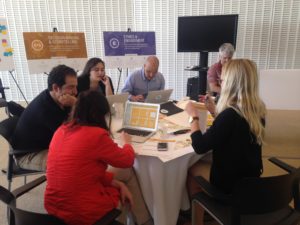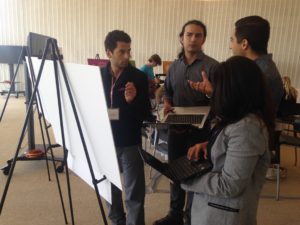![]()
We (Catherine and Rahul) just co-authored an article in the Journal of Community Informatics called Design Principles, Tools and Activities for Data Literacy Learners. In it, we make the case that most tools that help people work with data prioritize flashy visualizations and outputs rather than helping to scaffold a learning process. This ends up making the process of data analysis like a black box (especially for people from non-technical backgrounds). We pose the question – what would it be like if we designed tools for learners rather than users? We offer four qualities that a tool designed for learners should aspire to be: focused, guided, inviting, and expandable and we go on to talk about DataBasic as a case study. Here are the four qualities:
A focused tool strives to do one thing well. These tools are easily learnable and relatively constrained. Focused tools do not provide many types of options, and thus can provide a low entry point for data literacy learners. They create a small playground that is rich enough for the learner to play within, but not so rich that they get lost.
A guided tool is introduced with strong activities to get the learner started. Blank-slate websites and software packages require novice users to imagine usage scenarios. Guided tools combat this by introducing themselves with an activity that holds the learner’s hand as they get started. These tools might immediately present an on-ramp for learners via example data and example outputs.
An inviting tool is introduced in a way that is appealing to the learner. This might involve using data on a topic that is relevant or meaningful to them, or simply using humor and playfulness to invite the learner to experiment. Inviting tools make conscious decisions about visual design, user interface and copywriting to offer a consistent, appealing, and non-intimidating invitation to the learner. Inviting activities use familiar materials to produce playful outputs that attract interest and excitement from learners.
An expandable tool is appropriate for the learner’s abilities, but also offers them paths to deeper learning (perhaps by leaving the tool and graduating to more complicated tools). They overcome a single-minded focus by including call-outs and capabilities that allow the learner an opportunity and pathway to learn more about how the tool works. Expandable tools recognize that they are steps along the path to building stronger data literacy for the learner, and help bridge from previous work to next steps.
Check out the full paper here. It is part of a special issue on data literacy published by the Journal of Community Informatics.
















